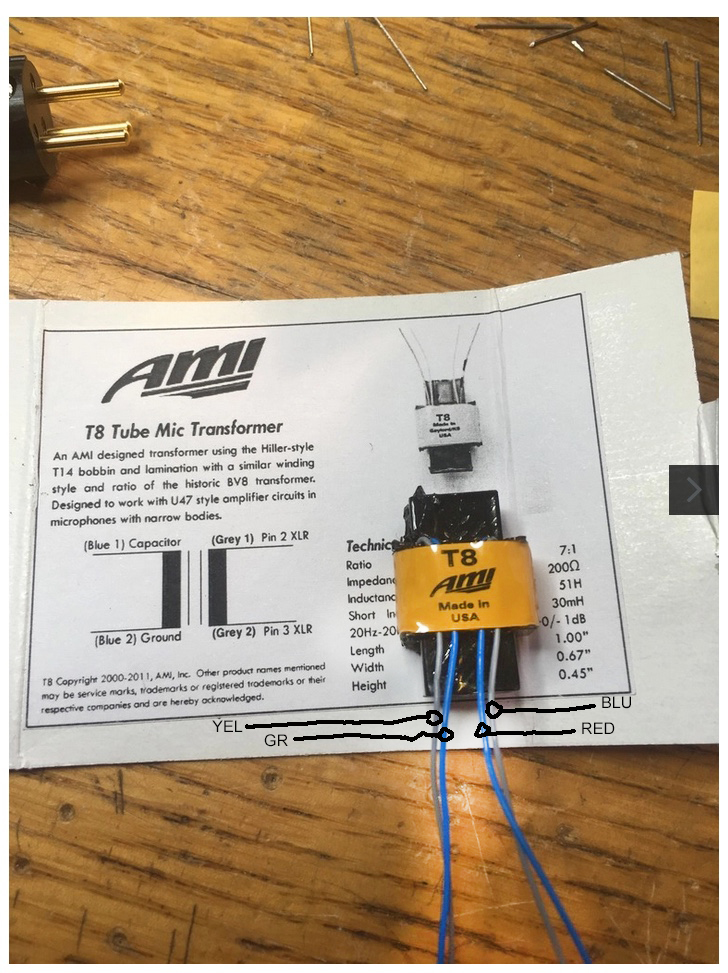I also built a mic with the AMI. Mine was less symmetrical than the one in the picture... on mine, there is a blue+grey pair that is anchored near the middle of the transformer and a pair that is more near the edge. I think I measured with an ohmmeter to determine which is primary and which is secondary; I used the center blue+gray pair as the high: I used a Sharpie felt tip marker to put a stripe on those two. That mic came out Pin 2 = high: correct in my world.
FWIW, I took my mic to one of the designers /developers of Audio Precision test gear to help me with biasing and he scratched his head for several minutes about the 'mystery' wire coding--it really bugged him.
FWIW, I took my mic to one of the designers /developers of Audio Precision test gear to help me with biasing and he scratched his head for several minutes about the 'mystery' wire coding--it really bugged him.





